 |
 |
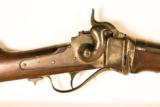 |
 |
 |
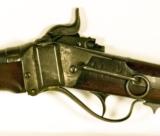 |
 |
 |
 |
 |
 |
 |
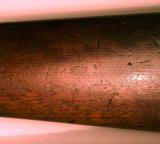 |
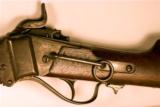 |
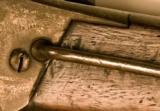 |

NICE ALL-ORIGINAL SHARPS NEW MODEL 1863 SADDLE RING CARBINE 50-70 CONVERSION, INDIAN WARS, ALSO CIVIL WAR DOCUMENTED
Guns International #: 100724515 Seller's Inventory #:
Category: Antique Rifles - Cartridge - Sharps Rifles - Antique
Seller's Information
When emailing or calling sellers direct, please mention that you saw their listing on GunsInternational.com
Seller: victorio1sw
Member Since: 8/4/13
State: Texas
Country: United States
Fax:
Number of Active Listings: 2
Seller: Private Seller
Return Policy: 3 day inspection and return policy on used guns.
Payment Types Accepted: Bank Cashier’s Checks and Postal Money Orders.
Description:
*****SOLD*****
Description:
This particular carbine, serial number C13528, was originally issued to “Co. C 7th Indiana Volunteer Cavalry” according to the Springfield Research Service Volume 4 book by Frank Mallory (1995). Also according to McAulay’s Civil War Sharps Carbines and Rifles, it was issued to Private John Mullen of the 7th Indiana Calvary.
In 1867 and 1868 contracts were awarded by the U. S. Government to Sharps Rifle Manufacturing Company to convert 31,098 percussion carbines to 50-70 centerfire. Most were equipped with relined barrels having 3 lands and grooves. Stocks were replaced as necessary and Sharps refinished these carbines. The finished conversions were then re-inspected and final inspector’s cartouches applied.
These converted carbines were then used by such as the 9th and 10th Cavalry Regiments (The black troops often called “Buffalo Soldiers”) during Indian Wars 1867 to about 1875. Those two regiments are now being celebrated in their 150th Anniversary 1866-2016. Also cavalry units such as the 2nd, 3rd, 5th, and 7th saw action with these carbines in Texas, New Mexico, and Arizona.
This gun has a 22” barrel with “New Model 1863” on top near the breach (which is often illegible). The original ladder rear sight is stamped “P. S. Lawrence / Patented / Feb 15th 1859”. The front sight is the original steel post with a thin German silver insert as manufactured. The external barrel is free of any noticeable dents or abuse, having only a few minor tiny random old nicks. On the left barrel flat is a “C” and “A. H. K.” inspection initials. It is covered with an even natural patina that matches the receiver. The rifling is strong and sharp with the expected scattered light pits.
The lockplate is boldly stamped “R. S. Lawrence Pat. / April 12th 1859” and “C. Sharps Pat / Oct 5th 1852”. On the left receiver side is a “C” inspector stamp and “Pat / Sept 12th 1848”. The saddle ring bar and ring are original. When the lever is lowered the block drops smoothly as the extractor pushes backward and the firing pin lifts. On closing, the lever snaps back into its upward position as held by the tension spring (which is hidden inside the fore end). As the hammer is drawn back the safety half cock notch is found to be unbroken, and at full cock the trigger will release the heavy hammer fall. The lever latch cannot be engaged unless the detent is purposely released, which was a safety feature preventing a locked lever in time of battle. The receiver assembly and lock plate are completely free of any dings and are covered with natural patina.
There is a hairline crack in the upper tang at tang screw, and it was used that way during period of use. This is a very common design flaw with these carbines, but was never a functional problem. The stock is held firmly in place by the upper tang, lower tang, saddle ring assembly, back action lockplate, and all of the screws that secure those parts. This was an extremely rugged and well-designed carbine, built to withstand the most extreme use and abuse.
It is obvious that the butt stock has not been removed from the receiver, upper tang, lower tang, lockplate, or saddle bar in perhaps 149 years, as evidenced by old dried grease and grime packed into all metal-to-wood contact areas. And really, it should be left that way! Above the saddle ring bar is the outline of a cartouche banner with perhaps “D. F. C.” initials. Also on the left center of the butt stock is another smaller banner cartouche with positive “D. F. C.” initials. On November 7, 1867 D. F. Clark had been appointed as sub-inspector at Sharps at $4.50 per day (p. 177 in the book “Sharps Firearms” by Frank Sellers). The stocks have never been sanded, and have a rich natural dark walnut color with a slight sheen. Only the expected dings from normal handling interrupt the smooth surfaces.
Overall this is a very nice original Sharps carbine that saw definite frontier use without the extreme abuse and neglect as seen on most of these.
Terms:
No International sales. Not being sold as a shooter, but as a collector’s Sharps. If you want to shoot any older gun, first take it to a competent gunsmith and have it checked out.
Three day inspection period, but ask questions prior to buying (see additional notes on returns at bottom). Additional pictures sent on request.
I accept Bank Cashier’s Checks and Postal Money Orders. No personal checks or Western Union MO’s. Payment must be received within seven days after sale date, and sent by Priority Mail with Tracking Number provided by buyer. Shipping by USPS Priority Mail with insurance $75.00 (and tracking number provided to buyer). Usually shipping occurs within 3 days after payment received.
Three (3) day Inspection and Return Policy: Only if returned Exactly as Received - Not Disassembled for Inspection, Not Tampered, Not Broken/Chipped/Scratched/Dented/Scuffed, or any Parts Switched. Any Original Documentation sent Must Be Returned with item.
SOLD
Antique: Yes